|
 Secure Site
Secure Site
|
 |
Archive for the 'zen monks' Category
 meditation may increase compassion Meditation might be your prescription for a happier mind and kinder heart, a new University of Wisconsin-Madison study shows. Scientists worked with 16 Tibetan monks and 16 meditation novices, giving the beginners lessons on compassion meditation two weeks prior to a series of brain-scan experiments. Those brain scans — taken while the participants responded to different emotional cues — revealed that the monks had more activity in certain brain regions involved in processing empathy. The findings, according to study authors, suggest that meditation may train the brain to increase feelings of compassion and happiness.
To start your own meditation practice, try this exercise created by “Untrain Your Parrot” author Elizabeth Hamilton:
- Set your Zen Meditation Timer with Gong for 20 minutes.
- Sitting with your spine erect, breathe deeply, placing your fingertips over the center of your chest if you like.
- As you inhale, picture a person to whom you want to extend compassion. As you exhale, silently say, “May compassion awaken.” Inhale and exhale for several breaths, focusing on the center of your chest.
- Recalling the person, silently say, “May whatever clouds compassion be healed.” Repeat this cycle with the phrase, “May this moment be experienced, exactly as it is,” and finally, “May compassion be extended to all.”
- Repeat the exercise for 20 minutes until your Zen Timer Gongs.
Use our unique “Zen Clock” which functions as a Yoga & Meditation Timer. It features a long-resonating acoustic chime that brings your meditation or yoga session to a gradual close, preserving the environment of stillness while also acting as an effective time signal. Our Yoga Timer & Clock can be programmed to chime at the end of the meditation or yoga session or periodically throughout the session as a kind of sonic yantra. The beauty and functionality of the Zen Clock/Timer makes it a meditation tool that can actually help you “make time” for meditation in your life. Bring yourself back to balance.
adapted from Body + Soul Magazine, August 2007
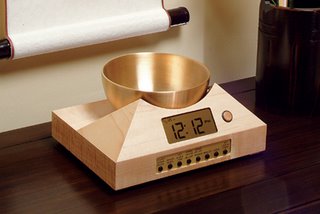 Zen Timepiece, a brass singing bowl clock and timer for meditation and yoga Now & Zen – The Zen Timer Store
1638 Pearl Street
Boulder, CO 80302
(800) 779-6383
Posted in intention, Japanese Inspired Zen Clocks, Meditation Timers, Meditation Tools, mindfulness practice, Now & Zen Alarm Clocks, Well-being, zen monks, Zen Timepiece by Now & Zen, Zen Timers
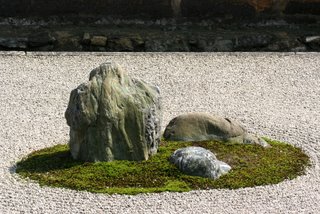 Ryoanji Zen Garden, Kyoto, Japan Steve McIntosh, Inventor of the Zen Clocks and Tehya (his wife) were most fortunate to visit the Ryoanji Zen Temple in Kyoto, Japan before their son, Peter McIntosh was born. It was a most peaceful and memorable trip. Below is a description of the ancient site:
Ryōan-ji is a Zen Temple located in northwest Kyoto, Japan. The garden consists of raked gravel and fifteen moss-covered boulders, which are placed so that, when looking at the garden from any angle (other than from above) only fourteen of the boulders are visible at one time. It is traditionally said that only through attaining enlightenment would one be able to view the fifteenth boulder.
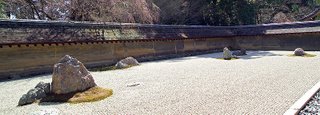 Ryōan-ji Japanese gardens are a living work of art in which the plants and trees are ever changing with the seasons. As they grow and mature, they are constantly sculpted to maintain and enhance the overall experience; hence, a Japanese garden is never the same and never really finished. The underlying structure of a Japanese garden is determined by the architecture; that is, the framework of enduring elements such as buildings, verandas and terraces, paths, tsukiyama (artificial hills), and stone compositions. Over time, it is only as good as the careful maintenance that it receives by those skilled in the art of training and pruning. Part of the art is to keep the garden almost static, like a painting.
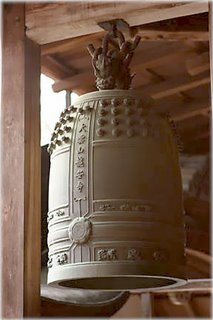 Ryōan-ji Temple Bell
Now & Zen Headquarter Store
1638 Pearl Street
Boulder, CO 80302
 - Zen Timepiece Inspired by Ryōan-ji Temple Bell
The Zen Timepiece – a Gong Meditation Timer is the result of ten years of product evolution at Now & Zen, and we trust that you will find it a delight and a pleasure. The Zen Timepiece’s greatest beauty is in its sound.
Once you take a moment to adjust the strike force and position of the bowl/gong to your liking, your ears will be treated to the lovely tones of the bowl’s long-resonating ring. We recommend you set the clock so that the bowl is sounded in the lower end of its range, because this is where it sounds the sweetest.
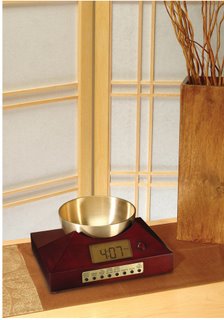 Gong & Chimes
Now & Zen’s Gong and Chime Store
1638 Pearl Street
Boulder, CO 80302
(800) 779-6383
Posted in Beauty, Chime Alarm Clocks, Japanese Inspired Zen Clocks, Meditation Timers, Meditation Tools, Now & Zen Alarm Clocks, Truth, Zen Gardens, zen monks, Zen Timepiece by Now & Zen, Zen Timers
 meditating may change your brain Apparently, people who meditate are a bit thickheaded—in a good way of course. A new study led by Massachusetts General Hospital shows that the regular practice of a particular form of meditation appears to thicken areas of the brain associated with attention and sensory processing.
Brain scans of experienced, frequent meditators showed thickening in the insula, an area of the cortex involved in the integration of emotion with thought. Most of the structural changes occurred in the right hemisphere of the brain, in the prefrontal cortex, which regulates memory and attention. This area tends to thin as we age, and yet the thickening was more pronounced in older practitioners. According to Sara Lazar, PhD, the study’s lead author, this evidence suggests that meditation may slow down the atrophy of certain areas of the brain that typically occurs with age.
Perhaps even more interesting, you needn’t don robes and retire to a cave somewhere to achieve these results. Instead of scanning the brains of Buddhist monks who devote their lives to meditation, researchers enrolled 20 people who averaged nine years of experience and about 40 minutes a day meditating. (Fifteen people with no experience in meditation formed the control group.) Those participants who meditated most deeply—as measured by breathing rates—showed the greatest changes in their brains, which suggests that meditation caused the thickening, as opposed to the thickening indicating a predisposition to meditate.
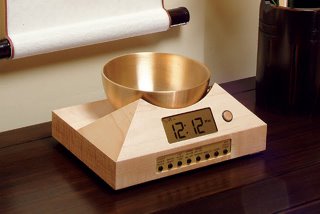 Tibetan Bowel Meditation Timers adapted from Natural Solutions Magazine, August 2006 by Megan Keough
Now & Zen’s Meditation Timer Store
1638 Pearl Street
Boulder, CO 80302
(800) 779-6383
Posted in intention, Meditation Timers, Meditation Tools, mindfulness practice, Well-being, zen monks, Zen Timers
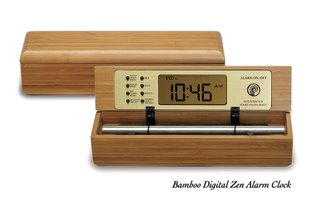 stillness practice tools and timers …that he washes dishes with as much care as he would if he were bathing the newborn Buddha: “If I am incapable of washing dishes joyfully, if I want to finish them quickly so I can go and have a cup of tea, then I will be incapable of drinking the tea joyfully.”
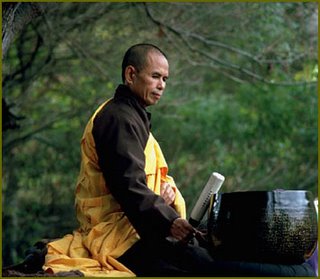 Thich Nhat Hanh Now & Zen – The Gong Meditation Timer Shop
1638 Pearl Street
Boulder, CO 80302
Posted in Bamboo Chime Clocks, zen monks, Zen Timepiece by Now & Zen, Zen Timers
 Compassionate Listening Practice by Thich Nhat Hanh When we speak of listening with compassion, we usually think of listening to someone else. But we must also listen to the wounded child inside of us. The wounded child in us is here in the present moment. And we can heal him or her right now.
Practice:
“My dear little wounded child, I’m here for you, ready to listen to you. Please tell me all your suffering, all your pain. I am here, really listening.” If you know how to go back to her, to him, and listen like that every day for five or 10 minutes, healing will take place. … Do that for a few weeks or a few months, the wounded child in you will be healed. Mindfulness is the energy that can help us do this. —Thich Nhat Hanh, from Anger: Wisdom to Cool the Flames
Our Zen Timepiece’s acoustic 6-inch brass bowl-gong clock is the world’s ultimate alarm clock, practice timer, and “mindfulness bell.”
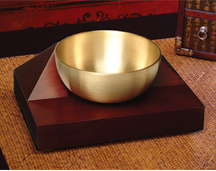 Singing Bowl Mindfulness Gong and Timer adapted from Natural Solutions Magazine, January 2008
 Zen Timepiece with brass bowl, a perfect meditation timer with gentle gong Now & Zen’s Clocks and
Timers
1638 Pearl Street
Boulder, CO 80302
(800) 779-6383
Posted in intention, Meditation Timers, Meditation Tools, mindfulness practice, Natural Awakening, prayer, Well-being, zen, zen monks, Zen Timers
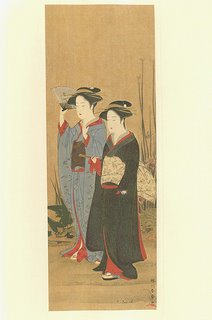 Two Women Walking, Shunshô Katsukawa, Ukiyo-e Meditation: It’s all about sitting still, inside a room, going inward. Right? Well, not necessarily. Buddhist tradition has long incorporated a more active technique known as walking meditation. Popularized in the West by Vietnamese monk Thich Nhat Hanh and other teachers, walking meditation often crops up at meditation retreats as a periodic break from long sessions of sitting.
For me—especially on a fine summer morning—a contemplative barefoot circuit of my dewy backyard can sound a whole lot more enticing than hunkering down on a cushion inside. And I seem not to be alone. Across the country, it’s getting easier to find opportunities to meditate in action. Dude ranches, sea kayaking outfitters, and wellness retreats now offer programs that combine basic mindfulness practice with everything from backpacking and rock climbing to horseback riding and paddling.
And why not? A growing body of scientific research supports meditation’s physiological and psychological benefits, including boosting the immune system, helping lower blood pressure, and reducing stress, anxiety, and depression. “Taking mindfulness outside, into the natural world, is another way of connecting the dots,” says Kurt Hoelting, who leads contemplative sea kayaking trips in Alaska. “It helps make it apparent not just intellectually, but also in our bodies, that this process of engagement with the present moment is an avenue to healing and deep restoration.”
Barefoot hiking
Sometimes, freeing your feet can be a revolutionary act. For walking meditation, Thich Nhat Hanh recommends ditching footwear. “You can feel the floor and connect with the earth more easily without shoes,” he writes in Walking Meditation (Sounds True, 2006). “The flow between you and Mother Earth becomes stronger. The longer you practice walking with this connection, the more your heart will be softened and opened, and the more you will feel nurtured, solid, and taken care of by the earth.”
 ume tree (japanese blum) Kaisan-do of Ryodaishi temple Most “barefooters” don’t meditate in any sort of deliberate way, and chances are, they’ve never heard of Thich Nhat Hanh. But his words certainly would resonate clearly. “Going barefoot makes you feel more connected with nature, that you’re part of a bigger universe,” says Jim Guttmann, a member of Barefoot Hikers of Minnesota, an informal group that gathers for regular boot-free rambles.
Like any meditation technique worth its salt, mindful walking begins with a focus on the breath. Breathing in and out with awareness brings the mind home to the body. Practice twice a day, for as few as 10 breaths initially. Breathe normally, sit straight but relaxed, a half-smile on your lips.
Now start walking slowly. Walk around the perimeter of your largest room, or choose a quiet, scenic spot outside. To establish a steady rhythm, try counting steps and using words. If you take three steps for each in-breath, for example, you can say silently, “Lotus flower blooms.” And visualize flowers blooming under your feet. The main thing is to have no goal of arriving; just enjoy each step.
 stillness practice: walking meditation in nature For some, these activities are a way to explore mindfulness through a pastime they already know and love. Others have established a meditation practice but want to broaden their experience. For just about anyone, these “conscious” outings are a great way to slow down, savor silence (which helps increase awareness of what’s really going on, both inside and out), and reconnect with nature—along with one’s own mind, body, and spirit.
excerpted from Natural Solutions, July 2007 (Adapted from Walking Meditation (Sounds True, 2006) by Nguyen Anh-Huong and Thich Nhat Hanh)
Use our unique “Zen Clock” which functions as a Yoga & Meditation Timer. It features a long-resonating acoustic chime that brings your meditation or yoga session to a gradual close, preserving the environment of stillness while also acting as an effective time signal. Our Yoga Timer & Clock can be programmed to chime at the end of the meditation or yoga session or periodically throughout the session as a kind of sonic yantra. The beauty and functionality of the Zen Clock/Timer makes it a meditation tool that can actually help you “make time” for meditation in your life. Bring yourself back to balance.
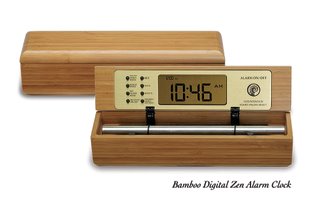 Bamboo Zen Chime Clocks & Timers Now & Zen – The Meditation Timer Store
1638 Pearl Street
Boulder, CO 80302
Posted in Chime Alarm Clocks, Japanese Inspired Zen Clocks, Meditation Timers, Meditation Tools, mindfulness practice, zen monks, Zen Timers
 Chartres Cathedral, France
Eastern and Western Meditation Traditions: Both Cultures Use Bells and Chimes
Bells and chimes are used in both Eastern and Western meditation traditions. In the Christian monastic tradition, the ringing of the bell during meditation reminds the practitioners to return to the object of worship.
 Zen Monks
Similarly, Zen monks have used gongs and “mindfulness chimes” to begin their meditations and during meditation to bring them out of their mental processes back to the stillpoint of tranquility.
The use of metal alloy bowls for devotional purposes can be traced back to the beginnings of metallurgy in China prior to 1,000 B.C. The bowl that comes with our Zen Timepiece is modeled after a Japanese “rin gong,” or Keisu, that is periodically struck with a stick to punctuate sutra-reading in Buddhist temples.
The Himalayan peoples have been using metal bowls in their rituals and as offerings to Deities since at least 560 B.C. These hand-hammered Himalayan alloy bowls have come to be known as “Tibetan Singing Bowls” because of the unique way they are sounded by rubbing a mallet over the rim so as to produce harmonic resonances and overtones. Although the bowl that comes with our Zen Timepiece is not technically a Tibetan Singing Bowl, it will produce harmonic effects if a mallet or striking stick is rubbed around its edge in a circular motion.
 Bowl-gong Clock has a long-resonating chime sound The bowl that comes with the Zen Timepiece is made from the following five metals: copper, zinc, lead, iron, and tin. It has been formed using the same forging techniques that have been used in Asia for two thousand years. Unlike hand-hammered Himalayan-style bowls, our Zen Timepiece’s rin gong bowl is made using methods which first appeared in Japan in the first century. Following these traditions, our bowl’s long-resonating tone has been carefully selected to bring beauty and harmony to your environment.
Now & Zen – The Gradual Alarm Clock Store
1638 Pearl Street
Boulder, CO 80302
(800) 779-6383
Posted in Chime Alarm Clocks, Japanese Inspired Zen Clocks, Meditation Timers, Meditation Tools, Now & Zen Alarm Clocks, Truth, zen monks, Zen Timepiece by Now & Zen, Zen Timers
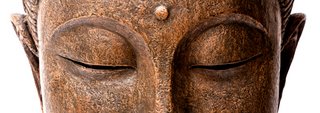 Buddha Maybe your next vacation should be a journey inward.
On the path to the hot springs at Tassajara Zen Mountain Center, I begin a kind of walking meditation, a continual awareness of what I am doing right now. Now I am crossing a footbridge to the baths, now I am taking off my flip-flops, now I am standing in front of an altar and reading the calligraphy: “With all beings/I wash body and mind/free from dust/pure and shining/within and without.”
“Guess my name,” says the little girl who shares the Japanese-style outdoor pool with me.
“Okay. Emma,” I say.
“Do you know her?” her mother asks, puzzled.
“No,” I say, “she just looks like an Emma.”
I’m not clairvoyant, but at retreat centers people converge in unexpected ways. Beyond the pool, past the sun-bleached sycamores on the far side of the creek, seven naked women in sun hats carefully wind their way upstream. There’s something mischievous about them as they wander in haphazard single file. I try to give them a context: Are they workshop participants hunting for wild mushrooms? Who knows? I think of the Zen notion of beginner’s mind, ready for anything, open to everything…and, silently, I thank Emma and the naked women for being here, for opening my mind.
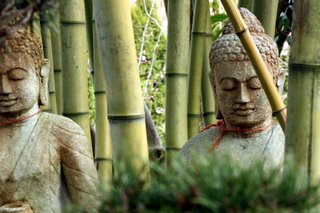 Buddhas In my mid-30s, I became an inveterate retreater. With two small kids, time to myself seemed a thing of the past. So I began to take week-long breaks, alone and seeking contemplation, at cabins, in farmhouses, on islands. Along the way, I discovered one retreat that offered me contemplation as a way of life shared by an entire community. Tassajara is the place I return to year after year.
Slowing way down is the first gift of Tassajara, and slow is the only way to drive the 14-mile dirt road that climbs through the Los Padres National Forest and over a 5,000-foot ridge of the Santa Lucia Mountains to the retreat. I stop and look down the steep descent through firs, sugar pines, tanbark oaks, and madrone into the canyon cut by Tassajara Creek. I exhale deeply, sloughing off my half-day drive south from San Francisco and a few layers of anxiety that have accumulated since my last visit here — the war and its threat to all of us with draft-age children, my divorce driving its way toward finality.
An open gate leads travelers to Tassajara, also known as Zenshin-ji (Zen Mind Temple), founded in 1966 by Japanese Soto Zen priest Shunryu Suzuki Roshi and the San Francisco Zen Center. The first Soto Zen monastery outside of Asia follows a traditional monastic schedule during the fall, winter, and early spring, then opens for guest season from late April through early September.
At Tassajara, where electricity is largely confined to the dining room and kitchen, cell phones don’t work, and a single public telephone is more trouble than it’s worth, guests are offered another way — the way of retreat. Here, the scheme of things is clear. One’s small place in it, uncomplicated.
 Digital Zen Alarm Clocks and Timers, available in maple, walnut, bamboo, and black lacquer Whether here or elsewhere, there are a number of ways to have a retreat. Retreats are times to turn inward, to quiet down, to let your own needs take precedence. At Tassajara, free from cars, buses, jobs, and family responsibilities, you simply bathe, eat, sleep, sit in meditation (or not, as you choose), swim, hike, read. You might venture to the massage kiosk to be kneaded, tapped, stretched, and unblocked. The day’s big excursion could be swimming some laps in the spring-fed creek-side pool, or hiking a mile downstream to a tumble of large boulders and small waterfalls you can ride down to the local swimming hole. Feeling more energetic, you might hike one of the trails — my favorite being up the mountain to the Wind Caves, where you can sit inside shallow, white-sand-floored pockets in the granite cliff face and behold the top of the world. You can return for the organic vegetarian meals, a cuisine pioneered by Tassajara’s Ed Brown and Annie Somerville, the chef of the Zen Center’s San Francisco restaurant, Greens.
Another way of visiting Tassajara is as a workshop participant. “Zen and Yoga” marks a turning point in my retreat life — a threshold to greater community, one that adds structure to my retreat time. With my daughter away at college and my teenage son spending every other week at his dad’s, I no longer crave alone time as I once did. Instead, I’m looking for ways to realign myself in relationship to others. In this context, retreat becomes an active verb.
My workshop takes place in the meditation hall, or zendo, where over the next three days we will examine how sitting meditation and the practice of yoga postures, or asanas, inform and enhance one another. I have brought my Zen Meditation Timer to end my meditation. It’s taught by Victoria Austin, a long-time Zen priest and yoga teacher who is also president of the San Francisco Zen Center. The afternoon we arrive, Victoria introduces us to the statue of a sitting Buddha that dominates the altar in the middle of the hall. When a fire destroyed the old zendo some years ago, the stone statue exploded into hundreds of pieces. Painstakingly reconstructed, the Buddha is almost exactly like the original, but not quite. “This Buddha is like practice itself,” Victoria reminds us. “You’re always putting yourself back together, each time a little differently.” I can relate to that; we all can. Practice reaches far beyond the yoga or meditation mat to include, ultimately, each moment of our waking lives.
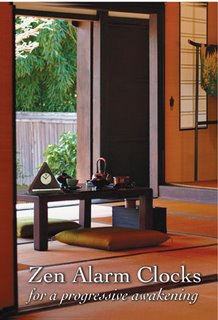 Tea Room with Zen Clock and Timer After restorative yoga, dinner, and an evening plunge in the hot springs, I’m as relaxed as I’ve ever been, in a comfy bed in my roomy turn-of-the-century cabin, lulled to sleep by the sound of water tumbling over creek stones. I’m awakened before dawn by the boom of a mallet striking a wooden block, calling the entire community to meditate in the zendo. An hour of sitting sorely reminds me of all the muscles it takes to sit that long, that straight. After temple cleaning, my workshop group continues with asana practice, all 25 of us spread out over the zendo, assuming Mountain, Tree, and Triangle poses, the Warrior series, and all the standing poses to fully awaken.
Famished, at breakfast I have a hard time choosing between the offerings: polenta with fresh strawberries, kiwis, and bananas, and the pancakes with raspberry compote. I sit at a table in the dining hall overlooking the creek with three women stem-cell researchers from Stanford University, a woman running for county supervisor, and a Minnesota man who founded a successful marketing firm. Busy lives and type-A personalities are a common bond for many people attracted to retreats.
Later that day, I talk to the gregarious guy from Minnesota. “I’m usually shy and standoffish, judgmental,” he admits to me, “but I decided to pay attention yesterday during sharing time.” He pauses to let a little cynical emphasis grin through. “I felt completely drawn to each story; it made me want to engage with everyone here.” I found myself wishing I’d done that. “Funny what’s possible,” he says.
It’s been a day of intense physical work, experimenting with yoga poses that help strengthen our meditation posture and focus our attention. Lying still, during Savasana, our last pose, Victoria says to us, “Let sounds come to you rather than pulling in the sounds.” I drift in and out, aware of the sound of footsteps on the gravel path, of the squawk of the ubiquitous blue jays, but most of all of our sighing — an ongoing chorus vocalizing the deep pleasure of exertion and release, a natural by-product of the primary work we are doing: following our breath in and out.
The next night at Victoria’s dharma talk, she compares the monks’ winter practice at Tassajara to one long breathing in, or refreshing the practice, and the summer guest season to a long breathing out, or giving to the larger community. I resolve to work on that out-breath.
 yoga Afterward the low light of kerosene lanterns dimly illuminates the path back to my cabin. I stop to watch the new moon rising above steep black slopes.
It is summer solstice night. Looking deeper, into the bright and scattered stars, I feel as if I’m standing in a roofless cathedral, buttressed by the Santa Lucias, part of some great force tilted upward in praise. My body tingles from the demands of the day, fledgling upper-back muscles awakened, all my cells celebrating in active communion. Attention. I whisper the word to myself, like an ancient secret. I raise my arms to the new moon in thankful salutation, take a long breath in, and sigh it westward, down the path of the year’s longest day.
For reservations call (415) 865-1895 or visit sfzc.org/tassajara/.
Adapted from Body + Soul, April/May 2005
Posted in Bamboo Chime Clocks, Hot Springs, Japanese Inspired Zen Clocks, Meditation Tools, mindfulness practice, Now & Zen Alarm Clocks, Well-being, zen monks
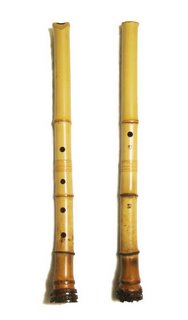 A shakuhachi flute, traditionally made of bamboo The shakuhachi, is a Japanese end-blown flute. It is traditionally made of bamboo, but versions now exist hardwoods. It was used by the monks of the Fuke of Zen Buddhism in the practice of suizen, blowing meditation).
Suizen is a Zen practice consisting of playing the shakuhachi bamboo flute as a means of attaining self-realization. The monks from the Fuke sect of Zen who practiced suizen were called komusō (“emptiness monks”).
adapted from wikipedia.org
 B Tone Digital Zen Alarm Clock in a Bamboo Finish
Now & Zen
1638 Pearl Street
Boulder, CO 80302
Posted in Bamboo Chime Clocks, Chime Alarm Clocks, Japanese Inspired Zen Clocks, Now & Zen Alarm Clocks, Progressive Awakening, zen monks, Zen Timers
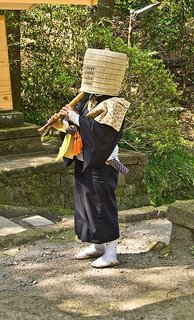 A Buddhist monk begging as a komusō A komusō, was a Japanese begging monk of the Fuke school of Zen Buddhism, during the Edo period of 1600-1868. Komusō were characterised by the straw basket (a sedge or reed hood named a tengai) worn on the head, manifesting the absence of specific ego. They are also known for playing solo pieces on the shakuhachi (a type of Japanese bamboo flute).
These pieces, called honkyoku (“original pieces”) were played during a meditative practice called suizen for alms, as a method of attaining enlightenment, and as a healing modality. The Japanese government introduced reforms after the Edo period, abolishing the Fukè sect. Records of the musical repertoire survived, and are being revived in the 20th century.
adapted from wikipedia.org
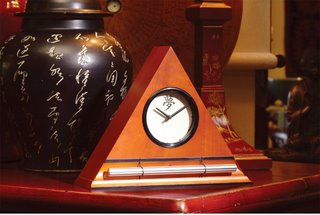 Kanji Dial Face in Honey Finish, Zen Alarm Clocks with a progressive chime
Now & Zen
1638 Pearl Street
Boulder, CO 80302
Posted in Chime Alarm Clocks, Japanese Inspired Zen Clocks, Meditation Timers, Meditation Tools, mindfulness practice, Natural Awakening, Now & Zen Alarm Clocks, zen monks
« Previous Entries
Next Page »
|
|
|
|